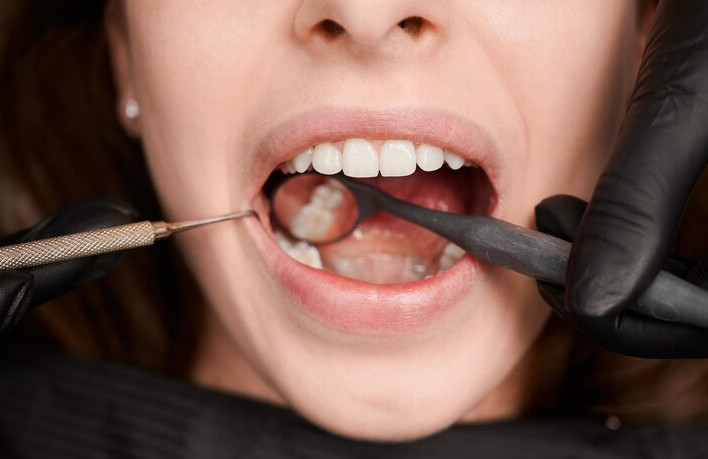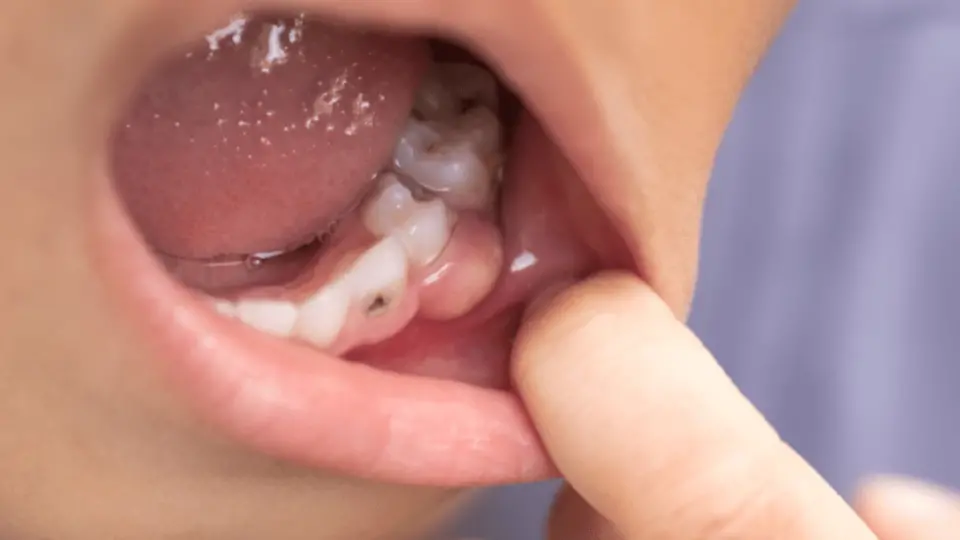When oral health emergencies arise, swift action can make a significant difference. One such condition requiring immediate attention is oroantral communication (OAC). This occurs when an unnatural opening forms between the oral cavity and the maxillary sinus, often during dental extractions or due to trauma.
Without proper care, this condition can lead to complications that affect not only your dental health but your overall well-being. Here’s why quick action is essential and how an emergency dentist can help.
What Is Oroantral Communication And Why Is It Important To Treat It Quickly?
Oroantral communication (OAC) is a small passage or opening that forms between the oral cavity and the maxillary sinus. This most commonly happens after the extraction of upper molars, as these teeth are located very close to the sinus floor. When this delicate bone between the tooth socket and the sinus breaks or is perforated, the sinus is exposed to the mouth.
Why is treating OAC quickly important?
- Infection risk: The mouth is full of bacteria, and this new opening can act as a direct passageway to the sinus, increasing the likelihood of a sinus infection, known as sinusitis. Sinus infections can cause symptoms like facial pain, congestion, fever, and a prolonged recovery time.
- Persistent discomfort: If left untreated, OAC can cause ongoing discomfort or pain, especially when chewing or speaking. Food or fluids can enter the sinus, exacerbating irritation and inflammation.
- Chronic conditions: If OAC is not managed promptly, it can develop into chronic oroantral fistula (OAF), a condition where the communication persists long term, leading to severe sinus infections and more invasive corrective procedures.
Swift action is crucial to prevent further complications and preserve both your oral and overall health.
How Can An Emergency Dentist Help With Oroantral Communication?
An emergency dentist plays a vital role in identifying and addressing oroantral communication promptly. The first step involves diagnosing the condition, which can sometimes be challenging as the symptoms of OAC might mimic other dental issues.
Here’s how an emergency dentist can help:
- Immediate Diagnosis: Emergency dentists are trained to recognize OAC symptoms quickly, which might include:
- Whistling sounds during breathing
- A sensation of air passing between the mouth and nose when chewing or speaking
- Pain in the upper jaw, radiating to the sinuses
- Nasal discharge after oral activities
- Quick diagnosis ensures that treatment can begin without delay, reducing the risk of complications.
- Preventing Infection: The emergency dentist will immediately implement steps to prevent bacterial infections. This could include prescribing antibiotics to protect the exposed sinus from harmful bacteria. The faster antibiotics are administered, the better the chances of preventing sinusitis.
- Consulting with specialists: If necessary, an emergency dentist may refer you to an oral surgeon or an ENT specialist for more specialized care, ensuring a comprehensive treatment plan is in place.
What Are The Risks Of Delaying Treatment For Oroantral Communication?
Delaying treatment for oroantral communication can lead to numerous complications. As with most medical conditions, early intervention is critical to minimizing risks. Here are some dangers associated with untreated OAC:
- Sinusitis: The most immediate risk of leaving OAC untreated is the development of a sinus infection. Bacteria from the oral cavity can travel into the maxillary sinus, leading to painful, recurring sinus infections.
- Chronic Oroantral Fistula (OAF): A more severe form of the condition, OAF occurs when the communication between the mouth and sinus becomes permanent. This can require extensive surgical procedures to correct.
- Facial pain and discomfort: The prolonged exposure of the sinus to the oral cavity can lead to chronic facial pain, discomfort when eating, drinking, or speaking, and a general decline in quality of life.
- Bone loss: If infection spreads and becomes severe, it may lead to bone loss around the upper jaw, which can affect the stability of surrounding teeth and complicate future dental treatments.
- Speech and breathing difficulties: A prolonged open passage between the mouth and sinus may also lead to altered speech or even breathing problems, as air and fluids can pass between the two cavities inappropriately.
The risks associated with delayed treatment emphasize the need to seek emergency dental care immediately if OAC is suspected.
What Procedures Does An Emergency Dentist Use To Close Oroantral Communication?
Once the dentist diagnoses oroantral communication, the next step is to close the opening and prevent further complications. The specific procedure depends on the size of the communication, its location, and how long it has been present. Here are some techniques an emergency dentist may use to close the communication:
1. Primary Closure
If the OAC is detected immediately, the emergency dentist will often perform a primary closure. This involves stitching the gum tissue over the communication to seal off the sinus. This quick, effective solution prevents further exposure to the sinus and speeds up healing.
2. Sinus Precautions
To prevent exacerbating the condition while it heals, the dentist may recommend precautions such as:
- Avoiding sneezing or blowing your nose forcefully.
- Not drinking through straws or creating suction in the mouth.
- Refraining from smoking, which can interfere with healing.
3. Surgical Closure
For larger or long-standing OACs, surgical procedures may be necessary. This could involve a buccal flap technique, where tissue from the cheek is repositioned to close the communication. In some cases, a palatal flap may be used, where tissue from the roof of the mouth is brought down to cover the opening.
4. Bone Grafting
In some instances, particularly if the surrounding bone has been compromised, the dentist might recommend bone grafting. This helps to rebuild the area and provides a solid foundation for the gum tissue to close over.
5. Postoperative Care
Following any closure procedure, the dentist will prescribe antibiotics and recommend follow-up care to ensure the area heals properly. Follow-up visits are crucial to monitor healing and to prevent any recurrence of the condition.
Oroantral communication may not be a well-known condition, but its implications can be serious. Recognizing the symptoms and seeking emergency dental care immediately can prevent complications such as sinusitis, chronic fistulas, and even bone loss.
An emergency dentist has the expertise and tools to diagnose and treat this condition efficiently, using procedures that close the communication and ensure proper healing. The key is acting quickly to protect both your dental and sinus health.
If you suspect you have oroantral communication, don’t hesitate—contact an emergency dentist immediately for the best chance at a smooth and swift recovery.
How Palmetto Family and Cosmetic Dentistry Can Help
At Palmetto Family and Cosmetic Dentistry, we are dedicated to providing prompt and professional care when it comes to oral emergencies like oroantral communication. Our team of experienced dental professionals understands the urgency of treating such conditions to prevent complications and ensure optimal healing. We offer a comprehensive range of services to quickly diagnose and treat OAC using advanced techniques, from primary closures to more complex surgical solutions when necessary.
By choosing our practice, you benefit from:
- State-of-the-art technology that ensures precise and minimally invasive treatments.
- Experienced professionals who are well-versed in managing complex dental and sinus issues.
- Personalized care plans tailored to your specific needs, ensuring the best outcomes for your oral and overall health.
- Follow-up and preventive care to guarantee long-term success and reduce the risk of recurrence.
At Palmetto Family and Cosmetic Dentistry, we pride ourselves on our compassionate approach to dental emergencies, offering swift care that brings you peace of mind and relief. Contact us today if you’re experiencing any symptoms of OAC or other dental concerns—we’re here to help!
Don’t Wait – Protect Your Oral Health Today!
If you suspect you have an oroantral communication or any other dental emergency, don’t delay! Quick action is essential to prevent further complications. At Palmetto Family and Cosmetic Dentistry, our skilled team is ready to provide immediate care, ensuring you get the treatment you need when you need it most.
Call us now to schedule an emergency appointment and safeguard your health with expert care!



